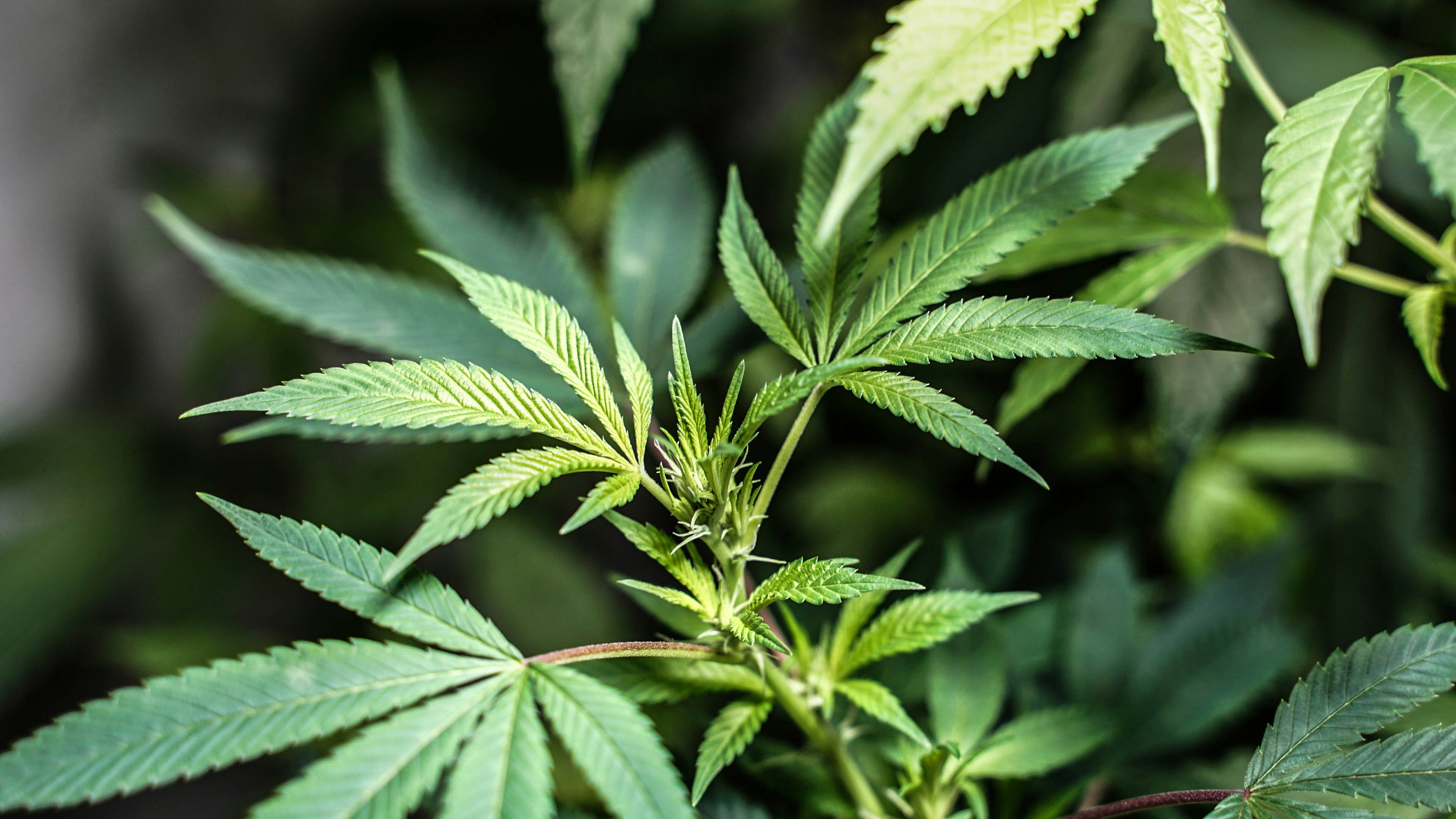As the cannabis market continues to grow, THCA flower is gaining attention for its unique properties and potential benefits.
Choosing the right THCA flower strain can significantly enhance your experience and therapeutic outcomes. Whether you like indica, sativa, or hybrid strains, THCA can make your life a lot more fun!
Let’s go over the essential factors to consider when selecting a THCA flower strain, providing you with the knowledge to make an informed decision tailored to your needs.

What is THCA?
THCA stands for tetrahydrocannabinolic acid, a cannabinoid present in raw cannabis plants. Unlike THC, the well-known psychoactive component of cannabis, THCA does not induce a high.
THCA is the precursor to THC; it converts to THC through a process called decarboxylation, which occurs when cannabis is heated. This distinction makes THCA appealing for those seeking the therapeutic benefits of cannabis without the psychoactive effects.
THCA is often found in fresh, live, or raw cannabis. When the plant material is dried and cured, some of the THCA slowly converts to THC, but significant amounts remain in the non-psychoactive form until it is heated.
This conversion is a crucial aspect for users who wish to experience the full spectrum of cannabis effects.
How THCA Works in the Body
When consumed raw, THCA interacts with the endocannabinoid system differently than THC. The endocannabinoid system plays a crucial role in maintaining homeostasis within the body, impacting functions such as mood, appetite, and pain sensation.
THCA does not bind directly to CB1 receptors like THC, meaning it does not produce a high. However, it may still offer therapeutic benefits through other pathways.
When THCA is heated, it converts to THC, which can then interact with CB1 receptors to produce psychoactive effects. The mechanism of action of THCA involves its interaction with the endocannabinoid system's receptors.
In other words, once THCA is decarboxylated, it’ll bind to your endocannabinoid receptors just like THC, making you super high.
Factors to Consider When Choosing a THCA Flower Strain
One of the first considerations when choosing a THCA flower strain is the desired effects.
Different strains can produce varying effects, ranging from calming and relaxing to energizing and uplifting.
If you are looking for a strain to help with stress or to unwind after a long day, a strain with calming effects might be more suitable. On the other hand, if you need a boost of energy or creativity, an energizing strain could be beneficial.
Additionally, consider any specific symptoms or conditions you want to target. THCA strains can be selected based on their efficacy in alleviating discomfort, managing stress, and more.
Personal tolerance and experience level also play a significant role in strain selection.
Beginners might prefer strains with lower potency and more balanced effects, while experienced users might seek out strains with higher THCA content.
When evaluating the desired effects, it is helpful to consider the strain's cannabinoid and terpene profiles. These chemical compounds play a significant role in determining the overall impact of the strain.
For example, a strain high in THCA and CBD might be more effective for pain reduction, while a strain with a higher THCA profile could provide more intense psychoactive effects.
Additionally, understanding your body's response to different cannabinoids and terpenes can help you tailor your choices to your specific needs.

Strain Types: Indica vs. Sativa vs. Hybrid
Cannabis strains are broadly classified into three categories: indica, sativa, and hybrid. Each type has its own characteristics and effects, which can influence your experience.
Indica strains are typically known for their relaxing and sedative effects. They are often recommended for nighttime use and for conditions such as sleeplessness, pain, and stress. Indicas tend to have higher levels of myrcene, a terpene that contributes to their calming effects.
Sativa strains are generally uplifting and energizing, making them ideal for daytime use. They can enhance creativity, focus, and sociability. Sativas are often used to alleviate creative blocks, fatigue, and boost mood.
Hybrid strains are a combination of indica and sativa, offering a balance of effects. Hybrids can be indica-dominant, sativa-dominant, or balanced. This variety allows users to find a strain that provides both relaxation and mental clarity.
The classification of strains can serve as a helpful guide, but it is essential to remember that individual responses can vary.
A strain's specific cannabinoid and terpene profile often plays a more significant role in its effects than its classification as indica, sativa, or hybrid.
Therefore, exploring different strains within each category and paying attention to your body's reactions can help you find the perfect match.
THCA Flower: Aromas and Flavors
The aroma and flavor of a THCA flower strain are determined by its terpene profile. Terpenes are aromatic compounds found in cannabis that contribute to its scent and taste, as well as its effects.
Common terpenes in THCA strains include:
- Myrcene: Earthy and musky, with relaxing effects
- Limonene: Citrus scent, known for mood elevation and stress relief
- Caryophyllene: Spicy and peppery, with anti-inflammatory properties
- Pinene: Pine scent, promotes alertness and memory retention
- Linalool: Floral aroma, offers calming and anti-anxiety effects
The terpene profile of a strain can significantly influence your overall experience, making it an essential factor to consider when choosing a THCA flower strain.
For example, a strain high in limonene might be uplifting and stress-relieving, while a strain with abundant myrcene could be more sedative and relaxing.
Understanding the role of terpenes can enhance your appreciation of the nuances in cannabis strains.
Additionally, some terpenes can have synergistic effects when combined with specific cannabinoids, enhancing the overall therapeutic potential of the strain.

THCA Flower: Potency and Dosage
Understanding the potency of a THCA flower strain is crucial for achieving the desired effects without overconsumption. Potency is typically measured as a percentage of THCA content in the flower.
Higher percentages indicate a more potent strain, which can produce stronger effects. For beginners, starting with strains that have lower THCA percentages (around 10-15%) is advisable.
More experienced users might prefer strains with higher THCA content (20% or more). Finding the right dosage involves starting low and gradually increasing until the desired effects are achieved.
Keeping track of your dosage and its effects can help you determine the optimal amount for your needs.
When determining potency and dosage, it's essential to consider your tolerance level and the method of consumption. Smoking or vaping THCA flower provides immediate effects, making it easier to gauge the appropriate dosage.
Additionally, the entourage effect, where different cannabinoids and terpenes work together, can influence the overall potency and impact of the strain, further highlighting the importance of starting with a low dose and gradually adjusting as needed.
Tips for Trying New Strains
Our biggest tip for finding the THCA flower strain that works for you is to try them. If you want a little direction before jumping in and spending a pretty penny on one of each at the dispo or an online store, here are a few tips.
Reading reviews and seeking recommendations from trusted sources can ensure you receive reliable and effective strains.
Additionally, keeping a strain journal can be incredibly beneficial. Documenting your experiences with each strain, including the effects, aromas, flavors, and any notable benefits or drawbacks, can help you make informed choices in the future (more on this in a second).
Finding your perfect THCA flower strain is all about trying a bunch of them and figuring out which one is right for you. You can read about different strains all you want, but the truth is, cannabis— and its many strains— affect us all differently.
And well, you’ll never know until you try!
Keeping a Strain Journal
A strain journal is a valuable tool for tracking your experiences with different THCA flower strains.
By recording details such as the strain name, cannabinoid and terpene profiles, dosage, method of consumption, and effects, you can gain insights into what works best for you.
This information can help you make more informed decisions and tailor your cannabis use to your specific needs.
When keeping a strain journal, consider noting the following details for each strain you try:
- Strain Name and Type: Indica, Sativa, or Hybrid
- Cannabinoid Profile: THCA, THC, CBD, and other cannabinoids present
- Terpene Profile: Dominant terpenes and their associated effects
- Dosage: Amount consumed and method of consumption
- Effects: Onset time, duration, and overall experience
- Symptoms Addressed: Any specific conditions or symptoms that were alleviated
- Aromas and Flavors: Notable scents and tastes experienced
By consistently documenting your experiences, you can identify patterns and preferences, helping you to refine your choices and find the perfect THCA flower strain for your needs.

So, What’s Your Perfect Strain?
Choosing the perfect THCA flower strain involves considering several factors, including desired effects, strain types, aromas, flavors, potency, and dosage.
Understanding the differences between indica, sativa, and hybrid strains, as well as the importance of terpene profiles, can guide you in selecting a strain that aligns with your needs and preferences.
Remember that the journey to finding the perfect strain is unique to each individual, and with patience and exploration, you can discover the strains that best suit your needs and preferences.
Embrace the process of learning and experimenting, and you will be well on your way to finding the ideal THCA flower strain that enhances your well-being and quality of life.
Remember, don't knock a strain ’til you try it!
















